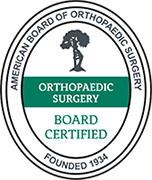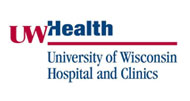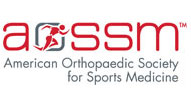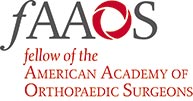Gluteus Medius Tendon Repair Surgeon in Griffin, Stockbridge, GA
Gluteus medius is one of the major muscles of the hip and essential for the movement of the lower body. Runners and athletes involved in high-impact sports may suffer from gluteus medius tendon tear. It can be repaired arthroscopically when the tear does not respond to conservative treatment. Dr. Akoh provides diagnosis and arthroscopic repair of gluteus medius tendon in Griffin, Stockbridge, GA. Dr. Akoh also provides highly specialized care during and after the surgery. Contact Dr. Akoh’s team for an appointment today!

What is Arthroscopic Gluteus Medius Tendon Repair?
Arthroscopic gluteus medius tendon repair is a minimally invasive surgical procedure employed for the treatment of a gluteus medius tendon tear, when the tear does not respond to conservative treatment.
Gluteus medius tears or rupture is a condition characterized by severe strain of the gluteus medius muscle that results in partial or complete rupture of the muscle. These tears are most commonly seen in runners and athletes involved in high-impact sports such as soccer or basketball and can occur due to traumatic injury or degenerative conditions such as tendinopathy (chronic inflammation of the gluteus medius tendon) or wear and tear.
Anatomy of the Gluteus Medius Muscle
The gluteus medius is one of the major muscles of the hip; essential for the movement of the lower body and keeping the pelvis level during ambulation. The gluteus medius muscle arises from the top of the pelvic bone and attaches to the outer side of the thighbone or femur at the greater trochanter by the gluteus medius tendon. The muscle functions as a hip abductor, controlling side-to-side movement of the hip and providing stabilization to the joint.
Preparation for Arthroscopic Gluteus Medius Tendon Repair
Preoperative preparation for arthroscopic gluteus medius tendon repair will involve the following steps:
- A thorough examination by your doctor to check for any medical issues that need to be addressed prior to surgery.
- Depending on your medical history, social history, and age, routine blood work and imaging may be ordered for safely conducting surgery.
- You will be asked if you have any allergies to medications, anesthesia, or latex.
- You should inform your doctor of any medications, vitamins, or supplements that you may be taking.
- You should refrain from medications or supplements such as blood thinners, aspirin, or anti-inflammatory medicines for a week or two prior to surgery.
- You should refrain from alcohol or tobacco at least 24 hours prior to surgery.
- You should not consume any solids or liquids at least 8 hours prior to surgery.
- Arrange for someone to drive you home as you will not be able to drive yourself post surgery.
- A written consent will be obtained from you after the surgical process has been explained in detail.
Procedure for Arthroscopic Gluteus Medius Tendon Repair
In general, arthroscopic gluteus medius tendon repair will involve the following steps:
- You will be placed either under general anesthesia or spinal anesthesia.
- The surgeon makes two or three small incisions, about 1/4 of an inch each, around the hip joint area. Each incision is called a portal. Mid anterior, anterolateral, poster lateral, and distal peritrochanteric portals are made.
- A blunt tube, called a trocar, is inserted into each portal prior to the insertion of the arthroscope and surgical instruments.
- The arthroscope is inserted through the mid- anterior portal, to view the hip joint. The images from the arthroscope guide the surgeon and assist in detection of any anomaly. It also enables the surgeon to see the attachment of the gluteus medius muscle.
- The surgeon conducts a diagnostic endoscopic examination of the peritrochanteric space.
- The other portals are used for the insertion of surgical instruments.
- Debridement of the tears on the undersurface of the gluteus tendon and pathologic tendon tissue is performed using a shaver.
- The tear at the lateral facet of the greater trochanter is identified and removed using a bur to stimulate active bleeding which would aid in healing of the repaired tendon
- The tendons are visualized and an anchor(s) is/are placed onto the greater trochanter of the femur and a suture is passed through the ruptured tendon. The tendon is then pulled down to its normal anatomic position and tied over the bone.
- After the surgical procedure is complete, the incisions will be closed with sutures or surgical tape.
Postoperative Care Instructions and Recovery
The recovery process involves at least six weeks of restricted weight-bearing with an assisted device or crutches and six weeks of a hip brace to protect the repair during the early healing phases.
In general, postoperative care instructions and recovery involve:
- You will be transferred to the recovery area to be monitored until you are awake from the anesthesia.
- Your nurse will monitor your blood oxygen level and other vital signs as you recover.
- Do not weight bear for at least 24 hours. You are encouraged to walk with assistance as frequently as possible to prevent blood clots.
- You are advised to keep your leg elevated while resting to prevent swelling and pain.
- You will notice some pain and discomfort in the hip area. Medications will be provided for comfort.
- You may experience bloating and discomfort in the stomach due to the gas used during surgery. Anti-nausea medications will be prescribed as needed.
- Keep your surgical site clean and dry for at least 48 hours. Instructions on surgical site care and bathing will be provided.
- Refrain from smoking as it can negatively affect the healing process.
- Eating a healthy diet rich in vitamin D is strongly advised to promote healing and a faster recovery.
- Refrain from strenuous activities or lifting heavy objects for the first couple of months post surgery. A gradual increase of activities over a period of time is recommended.
- Physical therapy is recommended to restore normal hip function and improve flexibility and strength.
- You will be able to return to your normal activities in a month or two; however, return to sports may take 4 to 6 months.
- A follow-up appointment will be scheduled to monitor your progress.
Risks and Complications of Arthroscopic Gluteus Medius Tendon Repair
Arthroscopic gluteus medius tendon repair is relatively a safe procedure; however, as with any surgery, there may be some risks and complications, such as:
- Infection
- Deep vein thrombosis (DVT)
- Blood vessel or nerve damage
- Hemarthrosis (bleeding inside the joint)
- Failure to relieve pain
- Instability
If you would like to have additional information on treatments of gluteus medius tear or would like to learn more about repair of gluteus medius tear, please contact Dr. Akoh, serving the communities of Griffin, Stockbridge, GA.










